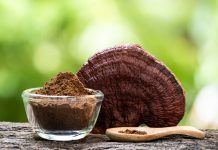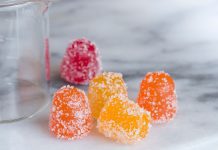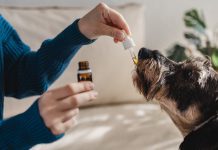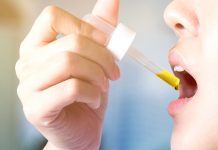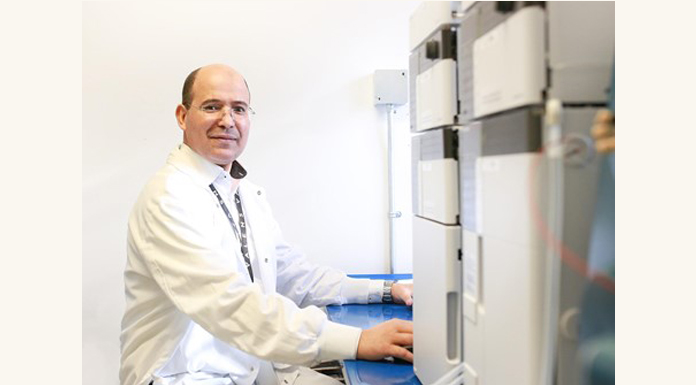
Jeff Fallows, President of The Valens Company, explores the need for product standardisation in a uniquely challenging market.
By 2022, the global worth of the legal cannabis market is anticipated to reach $32bn1. By 2027, it’s expected to climb to $57bn2. As legislative approaches to medical and adult use cannabis across North America grow increasingly lenient, edibles alone are predicted to reach $4.1bn by 2022. As market share shifts from flower towards alternative formats, the cannabis industry – which is in its legal infancy – is faced with the risks of growing too quickly. If left unchecked, consumer demand and first mover competition can drive unsafe products to market.
In this uncharted territory, analytical testing becomes increasingly important. Companies which specialise in food and beverage are eager to escape the stigma of unpredictable products, and legislative bodies are under immense pressure to keep consumers safe. Litigation around incorrect dosing is on the rise, drawing attention to a concerning lack of regulation in the industry. Companies that have jumped into the ‘green rush’ without building their foundations are being called out, and expensive examples have been made of many.
Canadian companies have had a first mover advantage in the legal market, with more time to establish successful operations nationally. Those like The Valens Company, which have valued safety and excellence from the start, are now in a position to bring their industry experience and knowledge to international markets3.
With varying regulations and a lack of standardisation, the cannabis industry is constantly being challenged. Adding to these challenges is the introduction into the market of edibles, with almost limitless product possibilities. To better understand what makes edibles so complex, we must first begin with what makes them unique.
Edibles and the body
Edibles take a different path in the body compared to cannabis that is smoked or consumed sublingually. This alternate route imparts unique effects on consumer experience.
Delayed onset
Upon ingestion, edibles travel through the gastrointestinal tract and on to the liver for processing. This is unlike sublingual, smoking and vaping, which have a more direct route into the blood. This extra step, first pass metabolism, gives edibles their characteristic slow onset of 30 to 90 minutes4.
Higher intensity
Delta 9-THC, simply known as THC, is one of the major psychoactive cannabinoids. When THC is metabolised in the liver, almost 100% is converted to 11-hydroxy-THC, a cannabinoid possibly more potent than THC itself. This higher proportion is said to give edibles a feeling of higher intensity, compared to the smaller 20% conversion through inhalation5.
Longer duration
The peak effects of edibles occur within approximately three hours after ingestion. Depending on the individual, effects can last anywhere from three to 12 hours, with extreme cases lasting up to several days. This is due to gradual absorption and reabsorption in the gut6.
Unique challenges with edibles
The effects of edibles vary by person, making it uniquely challenging to determine appropriate dosages. Influences range from the type and potency of the edible itself, to the consumer’s tolerance, body chemistry, and physical state at the time of consumption.
Dose stacking
Adding to the challenge of predicting effects and dosing, comes the risk of overconsumption due to delayed onset. A consumer, possibly familiar with the rapid onset of smoking, may ingest multiple doses before starting to feel the full effects: this is referred to as ‘dose stacking’; and is more common when edibles are not divided into single portions. In Canada, the amount of THC or CBD per package is limited to 10mg. In other markets, multiple doses may be contained within a single package7 – in a 100mg THC chocolate bar, for example, a single dose can be challenging to self-regulate. This highlights the necessity for more public education on safe dosing, and a greater emphasis on conspicuous labelling.
Label accuracy
In addition to the challenge of dosing edibles, consumers run an increased risk of overconsumption when labels are inaccurate. In recent years, there has been an increase in class action lawsuits against companies with mislabelled cannabis products. More comparative studies are being done between products, calling attention to incorrect potency claims in the market8.
Every legal market requires third party lab testing for cannabis product potency. However, not all testing labs are equal. Working with a credible and accredited lab will reduce the risk of inaccurate claims and promote consumer confidence; accreditation assures that data has been generated in a competent lab adhering to international standards, with higher quality and reliable results.
Quality assurance
Though the Canadian market is highly regulated, not all countries follow the same level of stringency. In addition to dosing inconsistencies, quality of cannabis can become a concern in a loosely regulated market. Without proper testing for contamination, companies are free to use edibles as a dumping ground for cannabis which cannot otherwise be sold – for example, a harvest that has been visibly damaged by mould would be visually unfit to market. However, if that same flower were used in edibles, the contamination would most likely go undetected8.
Edibles are one of the most common consumption methods for medical cannabis users, a vulnerable demographic which would be further put at risk by consuming contaminated products9. This highlights the need for laboratory testing from a trusted third party with documented capability in terms of navigating the challenges in edibles testing.
Challenges in testing
Non-representative samples
Homogeneous products, those that are uniform in consistency, are ideal candidates for testing. In these products, every sample would produce similar (if not identical) test results. This is not the case with edibles.
Edible products are heterogeneous, meaning that they are not uniform in composition. Testing two brownies within a single batch, or even multiple samples from a single brownie, may produce varying results.
This highlights the difficulties associated with sampling schematics, leading to the essential question: how much and how many samples are adequate to be representative of the whole? In addition, storage conditions and improper handling of the sample can have critical effects on the stability of the analytes of interest. As accurate testing relies on representative samples, these factors leave room for bias in an unregulated system.
Variance in sample types
Edibles add a level of complexity in testing, because of the sheer variety of products available. If every edible was a gummy, and every gummy followed the same steps in production, testing would be less complicated. This, however, is not the case.
With improvements in emulsion technology and the seamless integration of cannabis into foods and beverages, the product options are almost limitless. Any oil- or water-based product can now be infused, leaving the door open for virtually any consumable supermarket item to incorporate cannabis.
Lack of standardisation
The edibles market is not regulated by the same governing bodies as food and beverages, putting consumable cannabis in a unique position. All cannabis products require testing prior to entering the legal market, but a lack of standardisation and varied regulations make quality assurance difficult to manage. This is compounded in the edibles sector, where validated testing methods often lag behind product launches.
Validation of matrices
With the industry still in its infancy, there remains a lot of work to be done in developing and validating testing methods for edibles. The structural composition of the food and the matrix complexity plays a vital role in testing methodology.
Valens Labs, a subsidiary of The Valens Company, is well equipped to test various edible cannabis products. All tests that are routinely used for cannabis flower and oil can be carried over to edible products after the vital first step of extraction.
Sample preparation
Testing cannabis edibles is particularly complex due to the large variety of characteristics of the raw materials, additives and processing techniques used. Valens Labs follows similar methods to those used in the food and beverage industry. Compounds of interest are randomly distributed in edibles; and analytical results will depend on the type of sample and the sample preparation protocol used, which plays an essential role. By extracting the compounds of interest first as a homogenous liquid, Valens Labs uses validated methods for testing edible products.
Methods such as high performance liquid chromatography using a diode-array detector (HPLC-DAD) is used to determine potency, whereas other types of analytical instruments are used to test for various contaminants.
Representative sampling
A proven way to report accurate testing results for edibles is to use a single matrix as a category representative. Once a matrix has been validated, it can be used as a standard. It is impossible to validate every food matrix in this rapidly expanding market, so a representative is used for each category.
Product categories
Though the options may seem endless, the top markets for cannabis edibles fall into three main categories: baked goods, gummies, and chocolate10. Valens Labs has developed a validated method for gummy and brownie matrices; and is currently working on developing a method for chocolate.
Gummies
One advantage of extracting and diluting a sample in the early stages of production is that food colouring does not interfere with testing equipment. Where other methods dissolve the finished gummy and must therefore consider the risk of sugars and colourants potentially affecting the performance of expensive testing equipment, the method used by Valens Labs removes these matrix components first.
To validate a gummy matrix, the most important step is extraction. A blank gummy is ground up and spiked, followed by cannabinoid extraction and analysis. This involves a series of tests to determine several metrics, such as the limit of detection, calibration, accuracy, and robustness. The results lead to a validated method for testing a gummy matrix.
Brownies
In the new legal industry, most baked goods are produced on a relatively small scale. This can lead to incomplete mixing in a batch, a problem which is often resolved in commercial-scale operations.
To combat heterogeneity, Valens Labs grinds up samples to a fine powder that is best suited for extraction. Multiple samples are taken from different locations in the sample and averaged out to represent the whole.
By using a representative brownie matrix, the potency and impurities in any brownie product can be determined. Unfortunately, there is no way to validate all types of brownies, so a brownie representative is the best alternative. If a company wants to send their own product for method validation before testing, this is available by request.
Chocolate
Chocolate is a unique and challenging category of edibles, due to what is known as a ‘matrix effect’. This is where the sample size and concentration of THC do not increase proportionally to the size of the product, as expected. For example, in a 2mg chocolate sample, there may appear to be less THC per gram than a 1mg comparison. It is suspected that the oil in the chocolate interferes with the potency, due to THC being fat-soluble11.
Even though chocolate edibles have been around for many years, their complex matrix continues to interfere with method validation. In addition, the type of chocolate complicates the matter, with differing levels of oil in milk, white, and dark chocolate. Valens Labs is working on a validated method to address the unique complexities of chocolate, to ensure accuracy in testing and equip consumers with safe dosing information.
Analytical testing at Valens Labs
Valens Labs is committed to elevating cannabis testing by establishing a trusted, global standard. As an ISO/IEC 17025:2017 accredited lab, Valens upholds a gold standard in analytical testing competence.
Valens Labs offers a full portfolio of testing services, meeting and exceeding the high standards set by Health Canada. Valens Labs brings this excellence and experience to international markets, offering a range of testing to companies across the globe.
What makes Valens Labs unique
Customisation
As limits for contaminants and regulations vary by market, Valens Labs offers a suite of testing that can be tailored to a client’s needs. Trained lab technicians measure cannabinoid profiles and potency with high accuracy, as well as testing for contamination from pesticides, microbials, heavy metals, mycotoxins, residual solvents and other impurities.
Adaptability
Because the legal edibles industry is still emerging, the contaminant limits in most markets remain tied to plants and oils. Going forward, these limits may need to be extended to fall within food regulations. With a diverse array of analytical equipment and experience, The Valens Company is well positioned to adapt in real time to regulatory changes.
Accreditation
Choosing an accredited lab offers assurance that international standards will be met. Accreditation provides evidence that a lab is trustworthy to customers, with rigorous testing of samples required for selection and a commitment to generating high quality, replicable data.
Accreditation is also the best indication that a lab has competent staff, validated methods, and a quality system with the required documentation. Regardless of where the products are destined, customers can rest assured that testing requirements will be met.
Expertise
The Valens Company is a global leader in the development and manufacturing of innovative cannabinoid-based products. With a focus on being the partner of choice for leading Canadian and international brands, The Valens Company offers a diverse portfolio of extraction services. This includes CO2, ethanol, hydrocarbon, solventless and terpene extraction.
In addition to extraction, The Valens Company offers a wide range of product formats and white labelling services. This is enhanced by an active research and development department, dedicated to leading the market in custom manufacturing and innovation. With its subsidiary Valens Labs, Valens is a one-stop shop for cannabis extraction, testing, and product formulation.
Exclusive Technologies
There are many benefits to utilising The Valens Company’s full suite of services, including its exclusive rights to SˉORSE™ by Valens emulsion technology in the European market. This award-winning technology is an industry-leading solution to unpredictability, offering benefits in:
- Water solubility, for seamless integration into virtually any product
- Predictable onset and offset
- Elimination of cannabis taste and smell
- Product stability and consistency
As new delivery methods and alternative cannabis products enter the market, dependable emulsion technology becomes a prominent factor in a company’s success. By knowing that their products are safe, stable, and enjoyable to consumers, cannabis companies can scale up and expand with confidence.
Commitment to excellence
The Valens Company is in the process of obtaining Good Manufacturing Practice (EU GMP) certification from the European Medicines Agency, and is already a trusted name in recreational and medicinal markets. In partnership with Thermo Fisher Scientific, Valens has developed a Centre of Excellence in Plant-Based Science with a dedication to sector-leading analytical services.
As an outcome of working in the medical sector, Valens Labs has turned vigilance into competitive advantage. Combining the best practices from the food industry with industry expertise in analytical testing, Valens Labs is well positioned to lead the international market in edibles testing.
References
1 Arcview Market Research, in partnership with BDS Analytics. (2018). The Tasty Future of Cannabis Edibles.
2 Arcview Market Research, in partnership with BDS Analytics. (2018). The Road Map to a $57 Billion Worldwide Market.
3 Deloitte. (2020). Cannabis and International Growth.
4 Barrus, DG et al. (2016). Tasty THC: Promises and Challenges of Cannabis Edibles. Methods report (RTI Press), 2016, 10.3768.
5 Winstock, AR & Maier, LJ. (2019). GDS2019: Cannabis edibles – booming business and harm reduction? Global Drug Survey.
6 Zipursky, JS, Bogler, OD, & Stall, NM. (2020). Five Things to Know About Edible Cannabis. CMAJ 2020 February 18:192:E162.
7 Health Canada. (2019). Final regulations: Edible cannabis, cannabis extracts, cannabis topicals. Government of Canada.
8 Hahn, SM. (2020). Sampling Study of the Current Cannabidiol Marketplace to Determine the Extent That Products are Mislabelled or Adulterated. US Food and Drug Administration.
9 Shiplo, S, Asbridge, M, Leatherdale, S, & Hammond, D. (2016). Medical cannabis use in Canada: Vaporisation and modes of delivery. Harm Reduction Journal. 13. 10.1186/s12954-016-0119-9.
10 Deloitte. (2016). Recreational Marijuana Insights and Opportunities.
11 American Chemical Society (2019). Chocolate muddles cannabis potency testing. EurekAlert. American Association for the Advancement of Science (AAAS).
Jeff Fallows
President
The Valens Company
+1 778 755 0052
jeff@thevalenscompany.com
Tweet @TheValensCo
thevalenscompany.com
This article is for issue 4 of Medical Cannabis Network. Click here to get your free subscription today.


